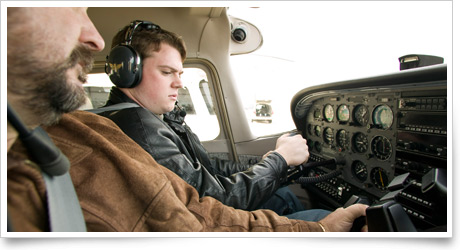| The following stories from the Dec. 30, 2011, edition of AOPA ePilot were provided to AOPA members who expressed an interest in the particular subject areas. Any AOPA member can receive information tailored to their areas of interest by updating their preferences online. |
training tipsThe first priority In all the cases described above, the same response applies: Fly the airplane. Easy to say down here on the ground. More of a project to actually have the discipline necessary to keep control, and divide your attention between the one flight requirement that never changes regardless of the situation—maintaining positive aircraft control—and any problem that has arisen. Aircraft accident reports continue to attest that this is one flight challenge that pilots don’t always meet. That’s more unfortunate because aviators have traditionally had a nice head start on other motor vehicle operators in learning about the danger of distractions. When the National Transportation Safety Board made news recently with a forceful statement about the distractive dangers of cell phone use by drivers, the headline-grabbing warning probably came as no surprise to student pilots, whose training—and flight testing—spotlights preparedness for dealing with “realistic distractions.” Not only that, but applicants are forewarned to expect to be baited with a realistic distraction during the flight test. Don’t confuse the need to divide attention between multiple piloting tasks with being distracted. It’s when that ability is overcome by stress or confusion that things start to unwind. For example, intent on maintaining altitude in rough air, the pilot fixates on the altimeter and wanders off course, or misses a critical radio call. Rattled by a poor approach, the pilot forces the aircraft onto the ground at too high a speed and loses control (instead of executing a go-around). Novices aren’t the only victims. An experienced jet crew was distracted by a baggage door coming open after takeoff, with an accident resulting. Here’s a tip for keeping distractions at bay: Whenever you face a challenging moment in flight, or practice an emergency procedure, or are simply answering an instructor’s question about how you would handle a flight scenario, remind yourself aloud that the first step is to “Fly the airplane.” That simple reminder could pay big dividends some day when it really counts. training products‘Sporty’s Complete Solo Course’If you can solo an airplane, you’ve made a huge accomplishment. Sporty’s new DVD course lays out the requirements via six hours of video on three DVDs. The course includes in-flight footage, 3-D animations, interactive on-screen review questions, and Air Facts segments with Richard Collins. The price is $65, and it includes a coupon worth $65 toward the cost of Sporty’s Complete Learn to Fly Course for the recreational or private pilot certificates. Order online or call 800/776-7897 (800-SPORTYS).
Note: Products listed have not been evaluated by ePilot editors unless otherwise noted. AOPA assumes no responsibility for products or services listed or for claims or actions by manufacturers or vendors. final examQuestion: I have been talking with my optometrist about getting contact lenses. Could you clarify what kinds of lenses are allowed by the FAA for flying?
Answer: Sure, your question is a common one. Contact lenses that correct each eye for distant vision only, as well as bifocal and multifocal lenses, are acceptable to meet the vision standards for all classes of medical certificates. Contact lenses that correct for near vision only, or wearing one lens in one eye to correct for near vision and the other lens to correct for distance, are not acceptable and do not meet the FAA standards. For more information, see AOPA’s subject report.
Got a question for our technical services staff? E-mail [email protected] or call the Pilot Information Center, 800/872-2672. Don’t forget the online archive of “Final Exam” questions and answers, searchable by keyword or topic. |
 What is the first thing you’d do if a passenger became ill during a flight? What’s the correct first reaction if you see a low oil-pressure indication or experience an inadvertent cloud penetration? What if the baggage door pops open on takeoff, or if the engine suddenly begins to crackle and sputter during a night cross-country?
What is the first thing you’d do if a passenger became ill during a flight? What’s the correct first reaction if you see a low oil-pressure indication or experience an inadvertent cloud penetration? What if the baggage door pops open on takeoff, or if the engine suddenly begins to crackle and sputter during a night cross-country?
